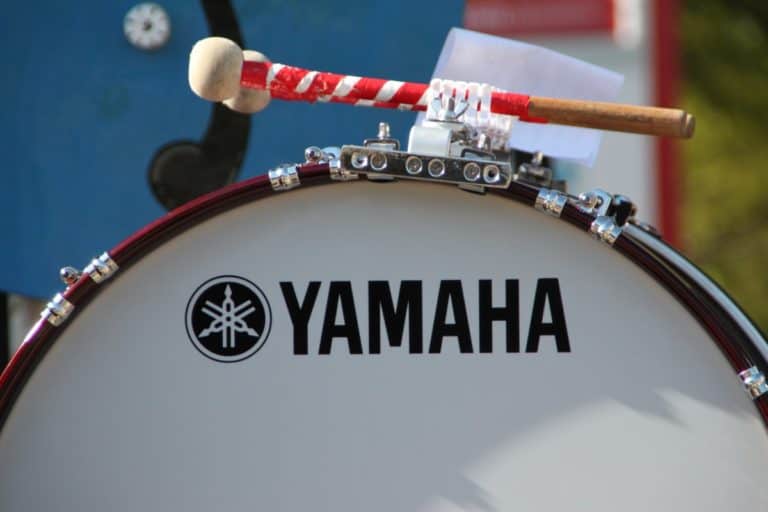What Percussion Instrument Produces Definite Pitch? (Examples)
There are a huge number of percussion instruments, indeed they are the largest family in the orchestra. Some are pitched and some are not
What Percussion Instrument Produces Definite Pitch? – The most obvious pitched percussion instrument would be the xylophone. Also, consider the timpani drum and marimba. If we arguably include the piano [An argument for another day], then they would also qualify as a pitched percussion instrument. A definite pitch is a sound that is discernible from another.
Here, I am going to take a much closer look into definite and indefinite pitch in percussion instruments and look in more detail of each of those items, answering many of the questions that come up in this regard.
List of Instruments with Definite Pitch
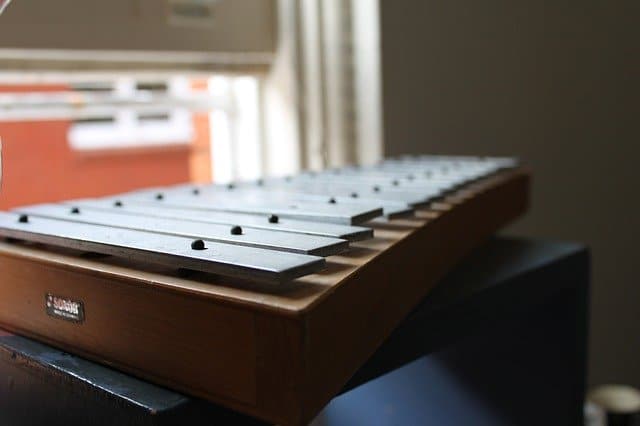
The xylophone is a pitched percussion instrument whose notes are played by striking the pitched wooden bars with mallets

The Timpani is also known as a kettle drum. ‘Kettle’ comes from the most common construction of the drum body itself.
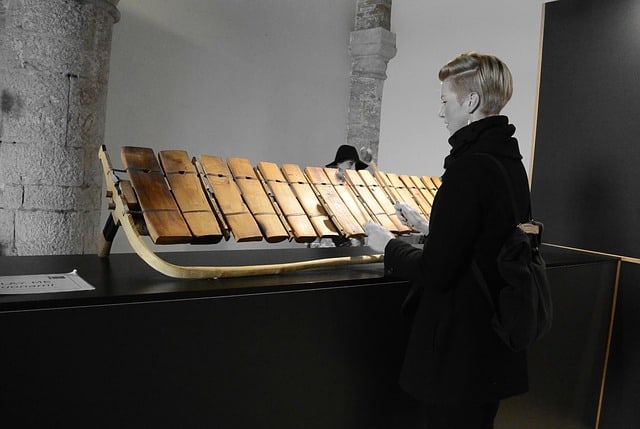
The Marimba is like a xylophone in construction but very different in sound. Softer and often deeper tones are produced
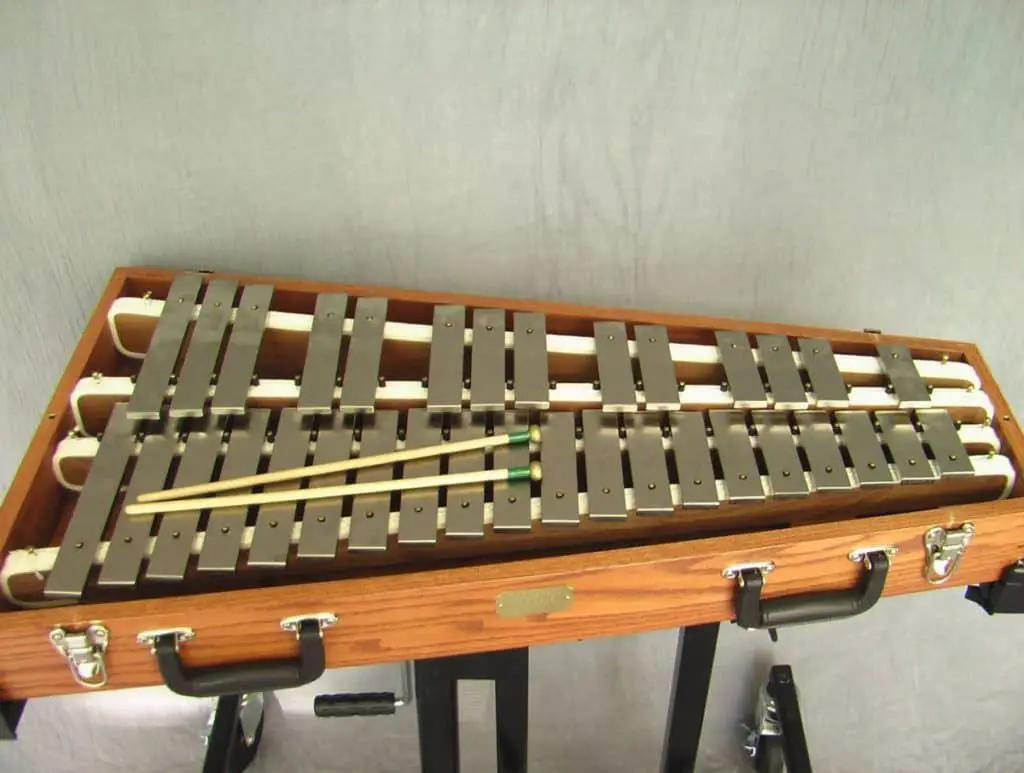
The Glockenspiel is similar to the Xylophone in having pitched bars to be struck, usually with mallets, the difference being the bars in the Glock are constructed of metal as opposed to wood.
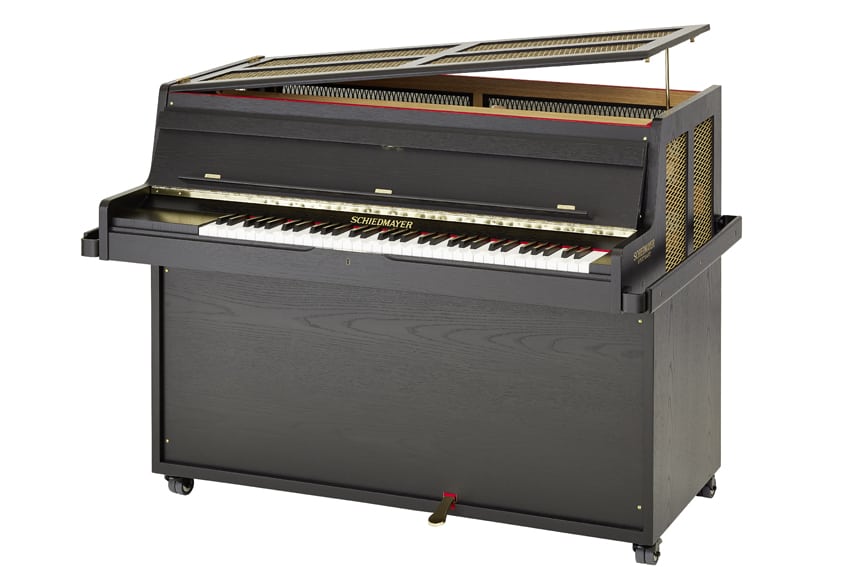
The celesta can look like an upright piano. Indeed the mallets are controlled by a keyboard and strike steel tuning forks.
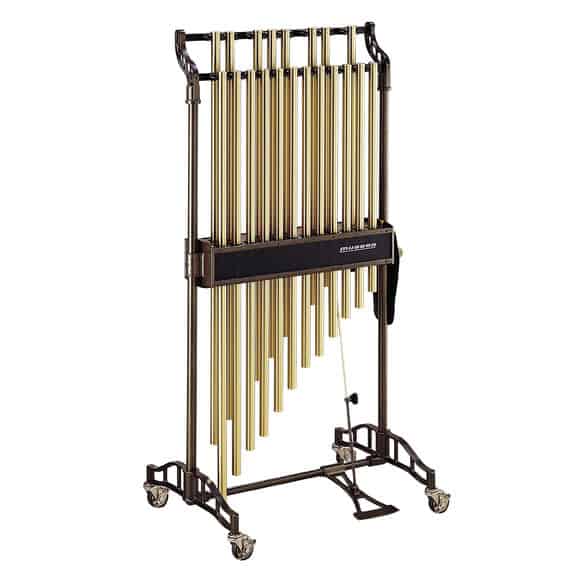
Chimes or Tubular bells certainly fall into the pitched percussion instrument group. Usually hung from a metal frame as shown, they are struck by mallets and provide a bell-type sound
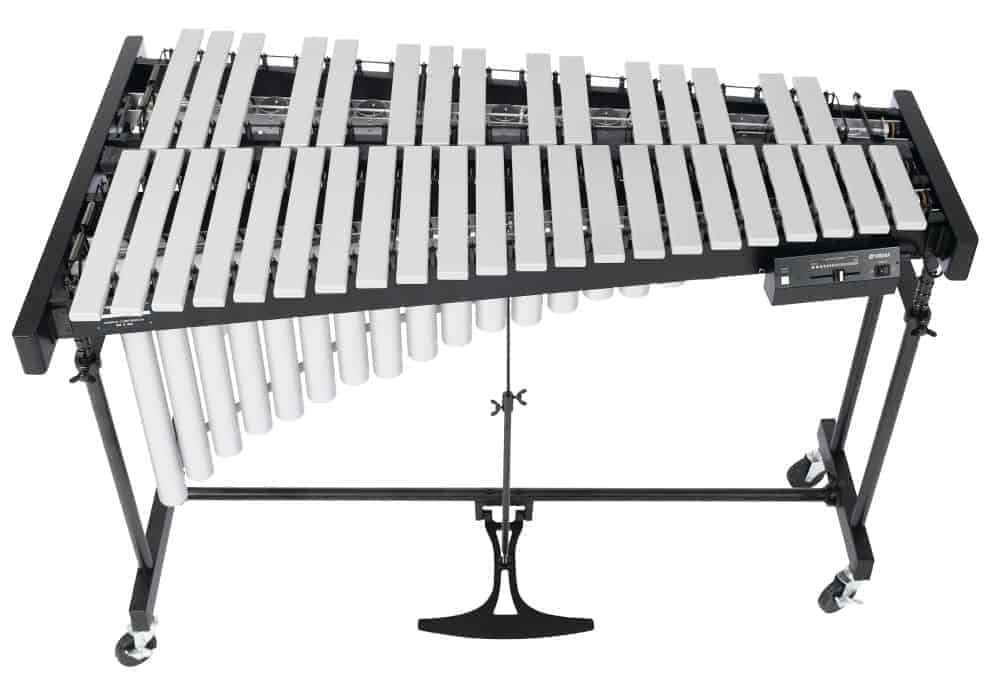
Vibraphone is another bar instrument but differs greatly from the Glockensoeil and xylophone in that there is a motorized valve at the head of the resonator tubes which produces the vibrato effect, hence the name.
What does it mean for a percussion instrument to be a definite pitch instrument?
Definite pitch percussion instruments are those that produce sounds, tones, and notes that are definitely discernible from others played on the same instrument. Imagine you hear the instrument struck once making a sound, and the next time it is played it makes a different sound. If you can tell the difference, then a different note has been played and there is a definite pitch present.
You can see the xylophone and Marimba above, both of which can be described as ‘bars’ struck with a mallet, in which case, both the Glockenspiel and Vibraphones can be included in this category.
The Timpani drums can be tuned and thus are pitched. The pitch can be adjusted by a foot pedal that stretches or loosen the drum heads producing higher or lower tones respectively.
My Favourite Stuff
These are a few of my favorite things including items covered by the subject of this page. All items are personally owned by me, [I have bought them all] and come with the recommendation based on my personal use not just a quick sale affiliate pitch.
Kosmosky Tank Drum
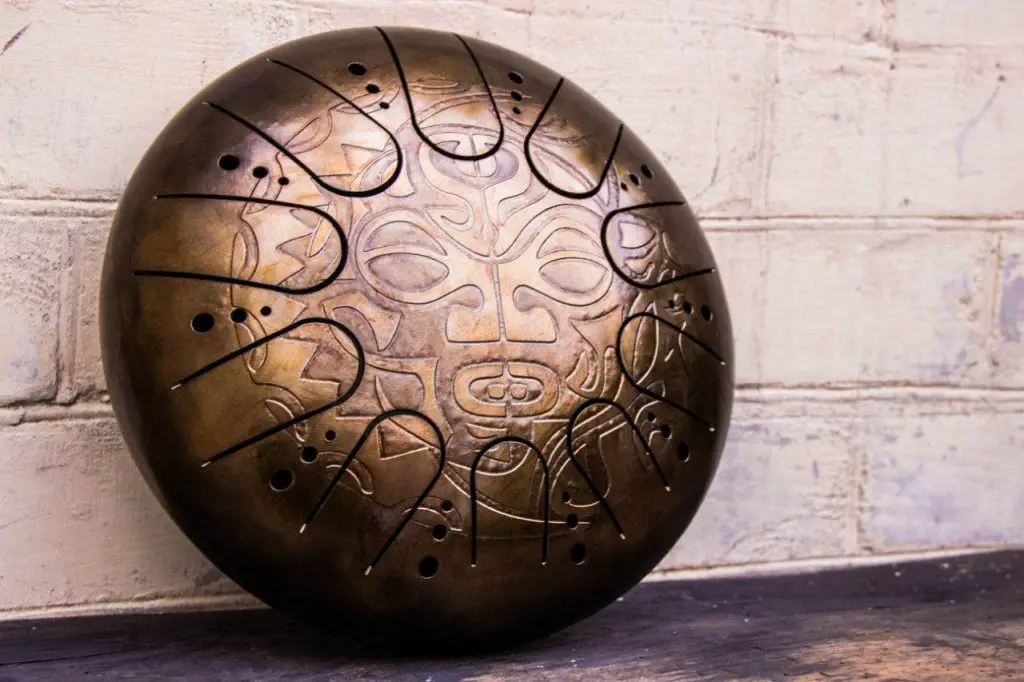
Kosmosky is my favorite tank drum which you can buy direct from the shop.
Priced between $269 to $490 be assured you are buying one of the best Tank drums available in the World saving at least $200 on the Rav Vast
Cheap Tongue Drum Course for Beginners
My good friend Alex has produced this superb video course on how to play Tongue Drum.
Using a Kosmosky tank drum to take you through the basics, there is a follow-up course too when you become more advanced.
The Rav Vast Range
The Rav Vast Tongue Pans are unique in size and sound and start at around $700.
An excellent introductory alternative for people not quite prepared to spend $2000 on a handpan.
Or an upgrade from Tongue drums like Kosmosky
Moozika Kalimba
Kalimbas are awesome and I own about 8 right now, but if you have come across my website looking for Kalimba information, then I will recommend this cheap and easy to buy Kalimba available on Amazon as something to get started on.
In fact it will last you as long as you are learning the instrument.
At around forty bucks, it’s not a bank breaker either.
How do you describe pitch in Percussion?
This means the same as tuned percussion but ‘pitched’ is the more commonly used phrased nowadays.
Pitch is when an instrument is used to play different notes in different pitches from a single instrument. These notes or pitches are produced by various means depending on the instrument in question.
Drums, which live within the membranophone family of percussion can produce different pitches by tuning the drum head. This is most often achieved by altering the tension of the drum head that is truck with the sticks, mallets or those played by hand.
Instruments like the Xylophone, Glockenspiel, and Celest are tuned based on the respective notes that are struck either in isolation or together. Whilst the Vibraphone works in a similar way but the added element of displaced air volume affected by a fan assist also contributes.
What is the Difference Between Pitched and Unpitched Percussion Instruments?
A pitched instrument allows the player to play musical notes at different pitches whilst the unpitched percussion instrument will play only indefinite pitch, that is to say, a single sound or note, that only the tone by way of playing can be affected.
For example, consider unpitched percussion instruments like the Cymbals, Tom Toms, Bass, and Snare Drums. All are played keeping rhythm to the score without adding a tune or melody to the overall musical sound.
Whereas, Marimbas, Xylophones, Timpanis, and Chimes all add depth and melody.
Simply, it is possible to play a tune on a pitched percussion instrument, whereas on an unpitched percussion instrument, a tune is not possible and they are better served for rhythm.
Silly Example – Knocking on a Front Door would be considered unpitched, but you can certaily start a rhythm for other pitched percussion instruments to play along with.

What’s the Difference Between Pitch and Note?
This is somewhat splitting hairs but a note is the written and read form of the pitch that will be played, but it is perfectly reasonable to ‘Play a note’
The note becomes a pitch when it is physically played and heard.
It is a very slight difference but one that you can appreciate the difference between although all but the scholars would probably be happy and understanding the two phrases as one and the same understanding in the context of the conversation
What’s the Difference Between Pitch and Tone?
Somewhat different to the difference between pitch and note. A tone is the quality of the sound and can be the difference in perception of a played pitch.
Imagine two identical instruments being played side by side, and the same pitch or note being played. The Human ear can distinguish at times the difference between the two, on a very minuscule level and the difference that is heard is the tone.
Consider one note played very strongly whilst another is played softly. The pitch will be the same but the tone will be different.
For another and much more obvious example, consider a piano playing one pitch and a trumpet playing the same. It is very obvious that the tone is different but to the untrained ear, the note may not be so discernible.
That is the difference between pitch and tone.
Related Questions for Pitched Percussion Instruments
Are chimes a pitched percussion instrument?
Yes. Chimes are very much a pitched percussion instrument, each ‘tubular bell’ tuned to a different pitch. They are most commonly played with mallets but can also be rung with the hands as part of a percussion set up. There are usually 18 tubes in a chimes set hung vertically upon a frame.
Is piano a pitched percussion instrument?
Here we go then. A piano is technically a pitched percussion instrument if taking the literal percussion definition of making a sound when hit. Given that there are a large range of different pitches available to play there is no doubt within the percussion class, the piano is very much a pitched percussion instrument.
There is some debate on whether it is percussion or a stringed instrument, but the strings are only activated when struck rather than strummed, so it really is percussion. However, it would seem it has been universally agreed that it fits into both string and pitched percussion instrument descriptions.
Is Xylophone a pitched percussion instrument?
The xylophone is definitely a pitched percussion instrument thanks to the wooden bars that make up its range. The tone of the keys can be affected by playing with different types of mallets, striking more than one key at a time. The resonator tubes below the keys provide the bell-type sound.
Fun Fact: Xylophone is a Greek word for “Wood sound” although the instrument originated in Africa and Asia.
Is Tambourine a pitched percussion instrument?
A tambourine is not a pitched percussion instrument. Despite the range of sounds that are possible by striking the head in different ways and the accompaniment of the zills, or jingles, the tambourine is not pitched.
Is Pandeiro a pitched percussion instrument?
The pandeiro is pitched in one way in so much as you can tune a pandeiro by adjusting the tension of the drum head and different tones are achievable by using special techniques whilst playing. A different sound, higher or lower can be achieved with the tension adjusters but unless you are ridiculously skilled, then it would sit between definite pitched and indefinite pitch.
Is Snare Drum a pitched percussion instrument?
A snare drum is tuned to a specific definite pitch although the fundamental pitch can be adjusted and tunes. The best tuning for a snare drum [14″] is somewhere between E3 to B3.
How does a pitched percussion instrument work?
Very simply a pitched percussion instrument works by being struck by an object. Often mallets, and often the hands too. The huge range of percussion instruments determines that there is no single answer to this question. For instance, drums make a sound through their bodies when struck with mallets, drum sticks, etc. A tambourine or Pandeiro works in the same way although there is less body for resonance, they also have Zills, or platinelas as an additional sound. Maracas are shaken, or ratchets have a handle that is turned.
Additional Info: The Ratchet is also known as the cog rattle, but rattle isn’t really the right term. For another odd percussion instrument, look up the Japanese Binzasara
Useful Stuff Related to this article
A couple of handy items featured in this article that are great for people just beginning to discover some of these instruments,
Yamaha Table Xylophone
Portable and excellent quality, the Yamaha table xylophone is easy to move around and play, so long as you can find a flat surface [Click here for the current price on Amazon]
Glockenspiel Beginners Kit
This beginner’s educational set up is the perfect glockenspiel starter kit for anyone interested in starting to play the Glock. A complete Kit that won’t break the bank while you get started. Recommended for Adults and Kids alike! [Check Amazon for Current Price]
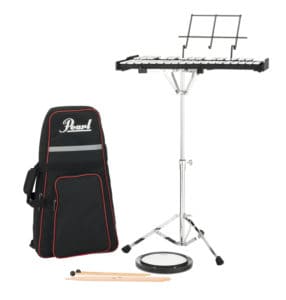



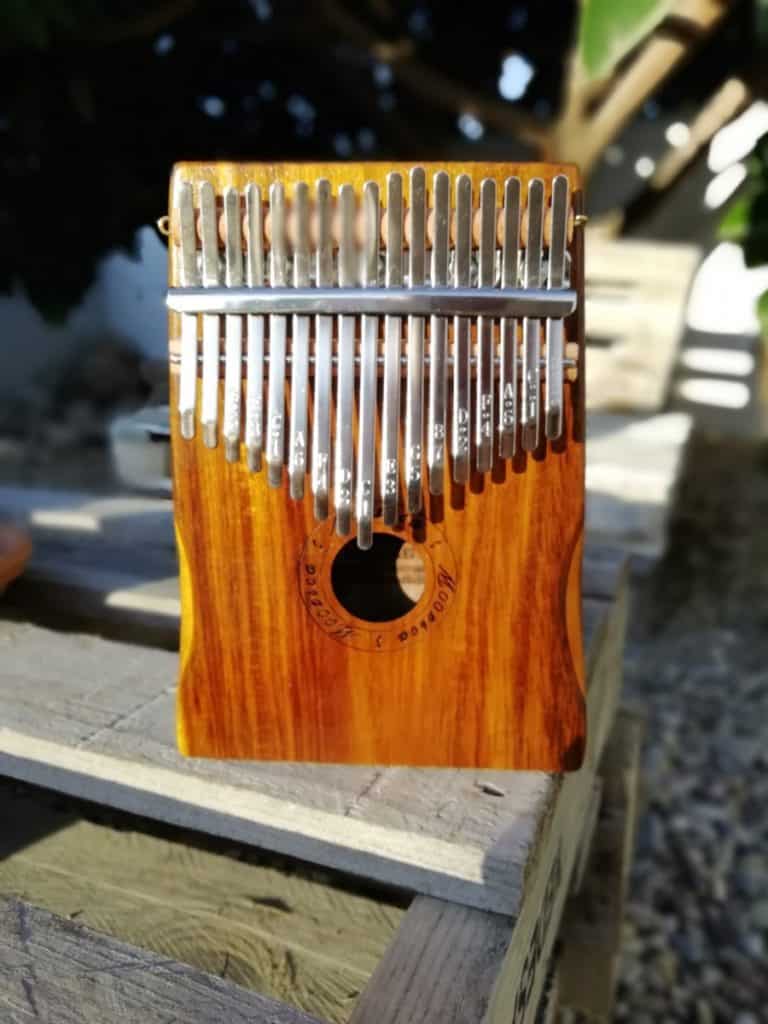

![[Answered] Is a Piano a Percussion or Stringed Instrument?](https://cdn-0.coolpercussion.com/wp-content/uploads/2020/09/piano-3957653_1280-768x513.jpg)
![Best Percussion Instruments For Kids [That you can play too]](https://cdn-0.coolpercussion.com/wp-content/uploads/2020/09/woman-4010110_1920-768x512.jpg)
